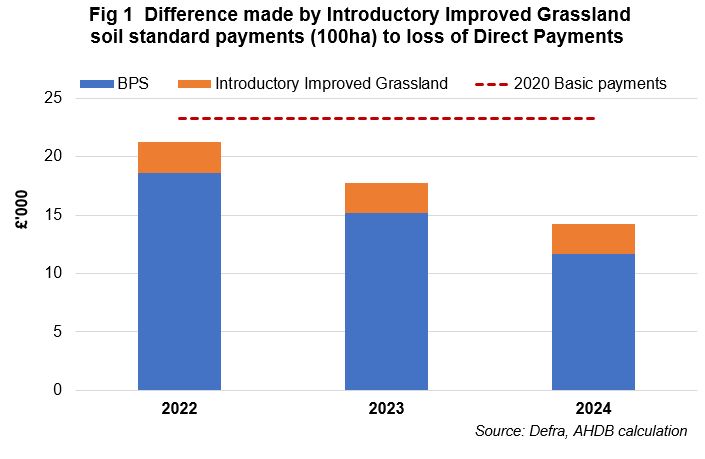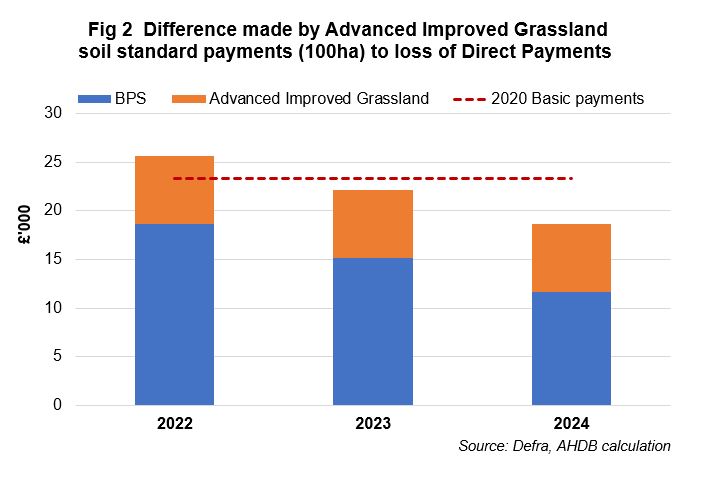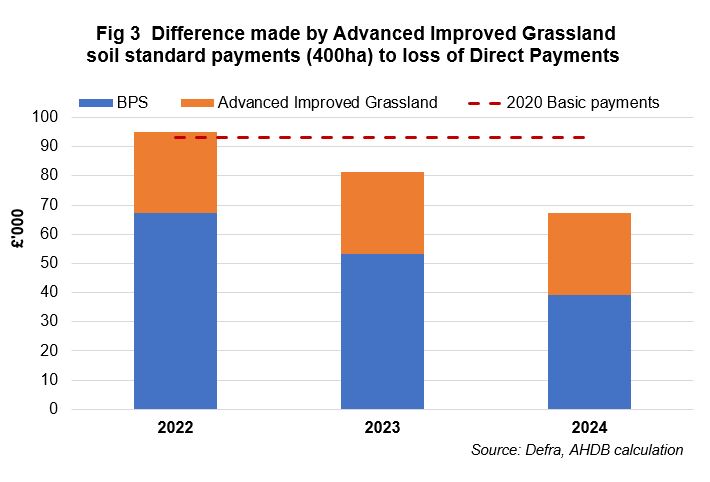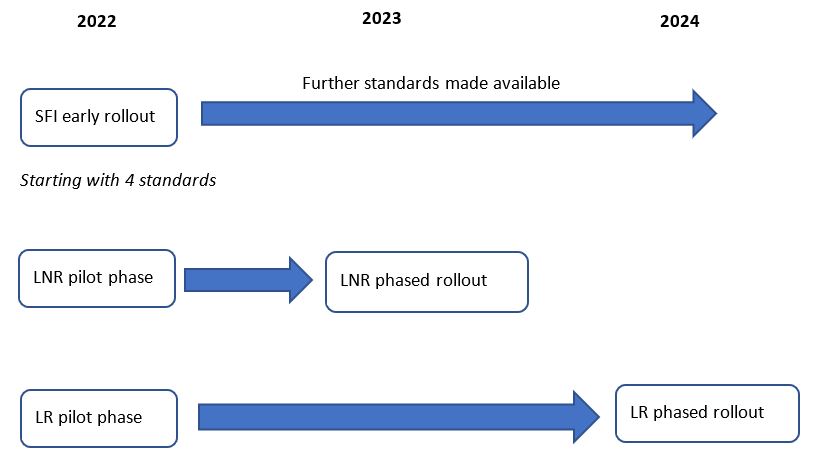How could payments to livestock farmers change from 2022?
Thursday, 22 July 2021
Fluid is probably the best way to describe English Agricultural Policy at the moment. In fact it needs to be as the emphasis is very much on trialling, testing and responding to feedback on the new agri-environment schemes that will be the bedrock going forward. As a result, the analysis provided here is based on current available information and as there are still many unknowns, assumptions have been made. Nevertheless, there are still key messages that can be gleaned so that farmers can prepare for what lies ahead.
Background
The early rollout of the Sustainable Farming Incentive (SFI) will begin in Spring 2022. This is different to the SFI pilot that will start in October this year with only four standards initially available:
- Arable and Horticultural soils
- Improved Grassland soils
- Moorland and Rough Grazing
- Annual Health and Welfare Review
The two soils standards are also on offer during the pilot and 2022 payment rates for these have been published (although these are subject to change). Payment rates for the Moorland and Rough Grazing standard are still being developed and planned to be announced by November 2021. Currently, the only details regarding the Annual Health and Welfare Revies are that payments will range £269-£775 depending on species.
In this article, we consider how income from Basic Payments (Direct Payments and Greening) and SFI payments could compare with 2020 Basic Payment Scheme (BPS) levels (i.e. before any reductions to Direct Payments were applied). It’s important to acknowledge that the analysis we have conducted is simplified and comes with some caveats. Importantly we don’t have information regarding the costs farmers will incur from participating in the SFI. It’s essential to consider both the costs and benefits of the scheme within your business, and our intention is to publish a more detailed analysis later in the year.
The Arable and Horticultural soil and Improved Grassland soil payment rates for the SFI early rollout are shown below. The soil payment rates for the SFI pilot have also been changed to match these.
|
Soil standard |
Introductory, £/ha |
Intermediate, £/ha |
Advanced, £/ha |
|
Arable & Horticultural |
26 |
41 |
60 |
|
Grassland |
26 |
44 |
70 |
For standards, the more you put in, the more you get out
Fig 1 shows the difference between BPS and SFI payment levels for the Improved Grassland soils standard at the Introductory level.
The gap between 2020 BPS levels and the combined BPS and SFI payments from 2022 onwards increases from -9% in 2022 to -39% in 2024. This is the same for the Arable and Horticultural soils standard as the introductory payment rates are the same.
Figure 2 shows that under the Advanced level of the Improved Grassland soils standard, combined BPS and SFI payments in 2022 are 10% higher than 2020 BPS levels, but are 20% lower in 2024.
The actions required under the three levels of the standard are the same, but cover a larger area from the Introductory level to the Advanced level. For example, under the Introductory level, permanent grassland must be maintained on 5% of the area, whereas for the Advanced level, the proportion rises to 15% of the area. Further details of the Improved Grassland soils standard can be found here.
As the area increases, the bigger the shortfall in losing Direct Payments
As the reductions in Direct Payments are steeper for larger farms than smaller farms, the gap between 2020 BPS levels and combined BPS/SFI payments from 2022 onwards is bigger for larger farms compared with smaller farms.
If the same analysis for the Advanced level of the Improved Grassland soils standard is applied to a 400ha farm (Figure 3), combined SFI and BPS payments are 28% lower than 2020 BPS levels in 2024 (compared with 20% lower for a 100ha farm).
The table below summarises the results for farms between 100-400ha.
Percentage difference between combined Basic Payment and SFI payments and 2020 Basic Payment levels (Improved Grassland soils, Advanced level)
|
Area, ha |
2022 |
2023 |
2024 |
|
100 |
10% |
-5% |
-20% |
|
200 |
8% |
-7% |
-22% |
|
300 |
4% |
-11% |
-26% |
|
400 |
2% |
-13% |
-28% |
Although the larger area means that more income is received from SFI payments, this isn’t offset by the reduction of Direct Payments.
Looking at the bigger picture…
It’s clear, that the more you engage with the new SFI scheme, the more income you will get back. As mentioned before, this analysis doesn’t take into account the costs involved (as we do not have that information yet) and it’s assumed that the whole farm area is placed under the SFI rollout scheme. Furthermore, this analysis is only based on current available information. For livestock farmers, the Annual Health and Welfare Review will provide another stream of income and other standards will become available as further testing of the scheme continues. Furthermore, payment rates for all standards are subject to change.
The pilot phases of the Local Nature Recovery (LNR) scheme and Landscape Recovery (LR) scheme are also due to start in 2022 as shown below. Additionally, there are other schemes that will be available such as the Animal Health and Welfare Pathway and the Slurry Investment Scheme (applications open in 2022 for both of these).
A key point to be aware of is that Defra has a fixed pot of £2.4 billion per year that will be used for the new schemes in England, until the end of this parliament. Most of this money will go towards environmental schemes, where they expect to split investment evenly between SFI, LNR and LR. This means that on an individual basis, only a third of the budget is ring-fenced for farmers.
To see how your business could be impacted, have a look at the AHDB Business Impact Calculator as it will show how your Direct Payments will be affected. Also have a look at the information on the Trade and Policy web pages regarding the new schemes so you are best equipped to plan for the changes ahead.
There are a number of points to note regarding this analysis:
- The figures generated do not take into account the costs that are involved in implementing actions under an SFI standard
- Payment rates are subject to change as the SFI is developed further
- It is assumed that the total farm area (on which Basic Payments are based) is put under a given SFI standard
- 2020 Direct Payment figure of £163/ha (non-Severely Disadvantaged Area) and greening value of £70/ha have been used as base values
- Further standards, in addition to those shown in the analysis, are likely to be added over the given timeframe
- The SFI was never intended to be a ‘like for like’ replacement of the BPS
Similar analysis showing how payments to arable farmers could change from 2022 can be found here.
Topics:
Sectors:
Tags:





